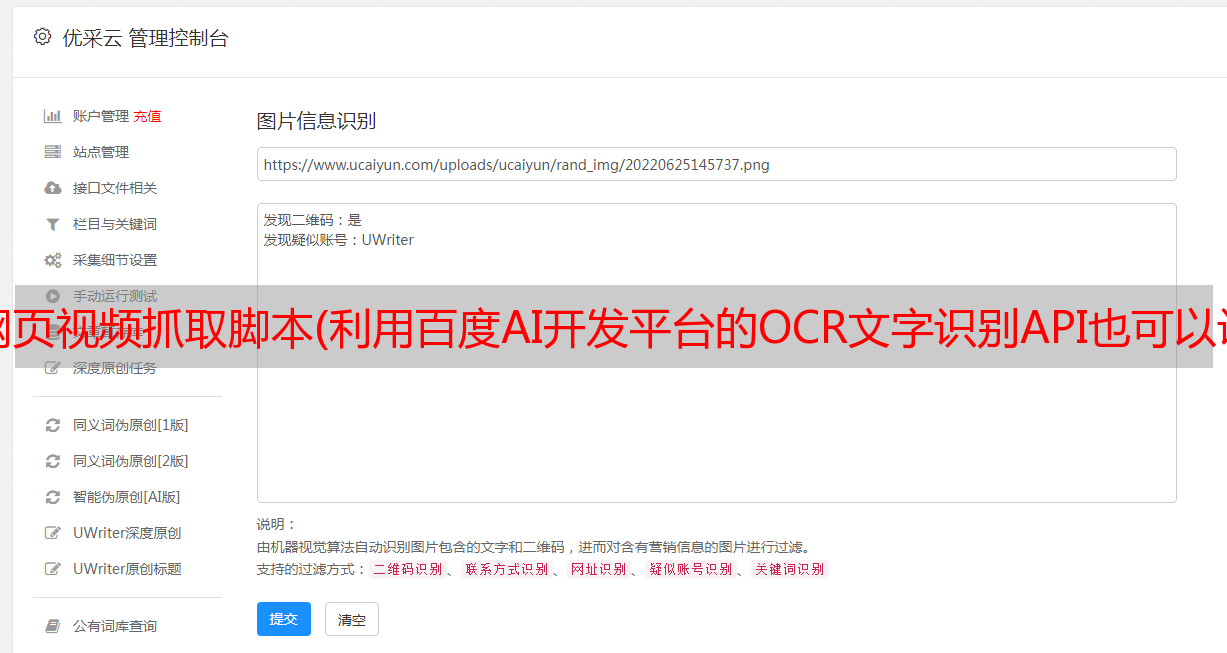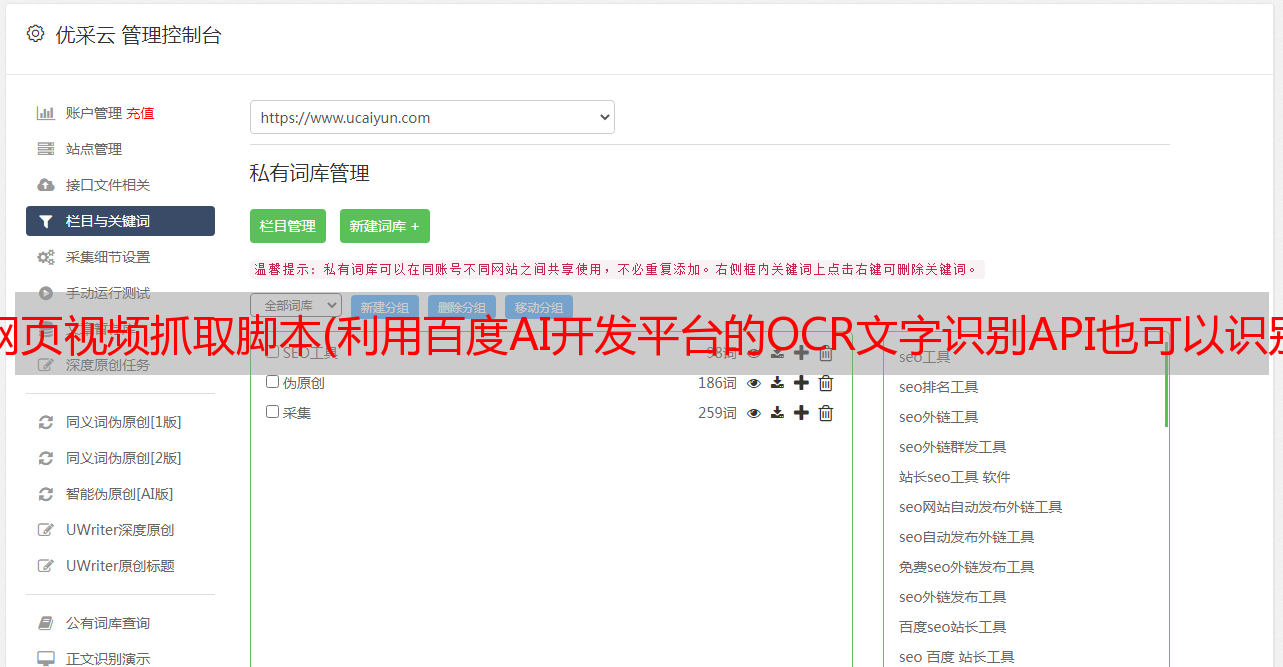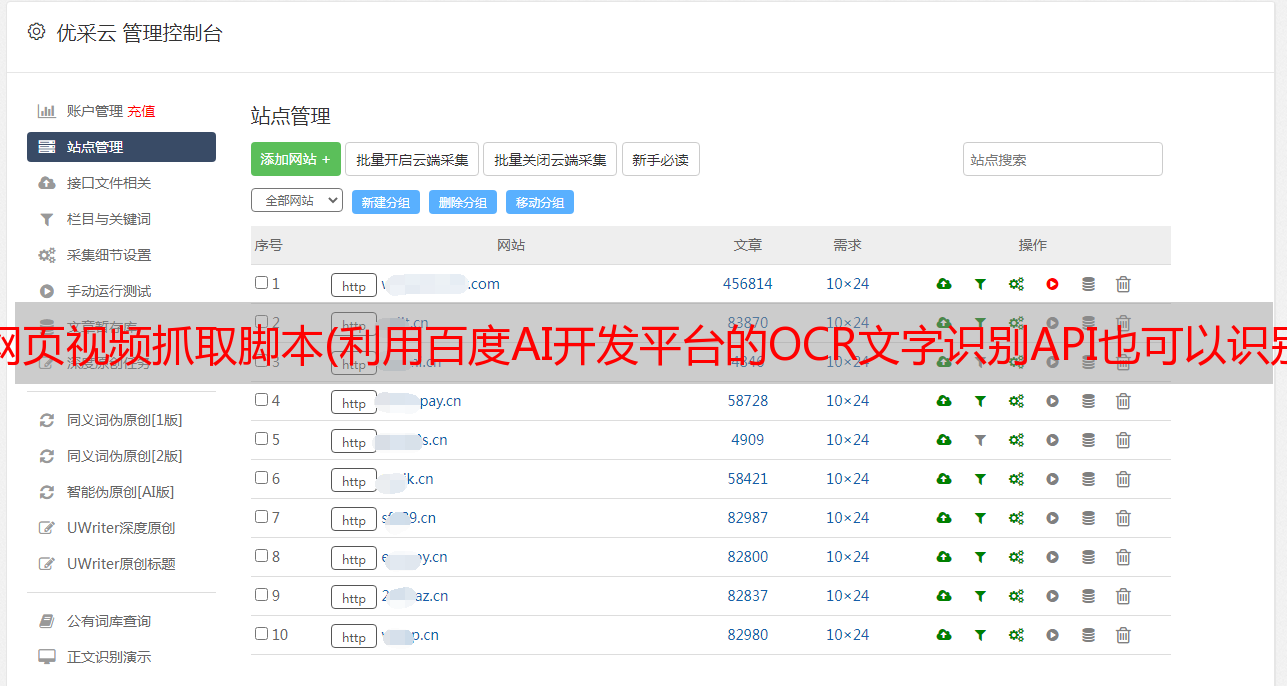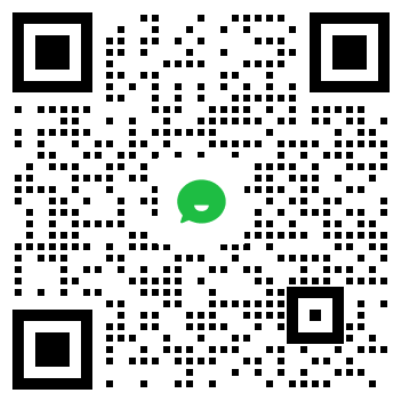网页视频抓取脚本(利用百度AI开发平台的OCR文字识别API也可以识别 )
优采云 发布时间: 2022-02-22 13:22网页视频抓取脚本(利用百度AI开发平台的OCR文字识别API也可以识别
)
一、Selenium 网页截图,图片定位二次精准截图
第三方模块“selenium”用于 Python 自动化与 Web 浏览器交互。
1.安装模块 pip install selenium
2.安装对应版本浏览器的驱动
谷歌查看浏览器版本访问“chrome://version/”
google驱动下载地址
注意下载解压后的驱动放在系统环境变量PATH的路径下
3. 代码如下:
# -*- coding:utf-8 -*-
from selenium import webdriver
import easyocr
import time
from PIL import Image
def screenshots(): # 访问网页截屏
driver = webdriver.Chrome() # 初始化一个谷歌浏览器实例
driver.maximize_window() # 打开最大窗口
driver.get("http://quote.eastmoney.com/sh600797.html") # 访问网页
js = "var q=document.documentElement.scrollTop=500" # 下拉500个像素
driver.execute_script(js) # 执行下拉500个像素操作
time.sleep(3)
driver.get_screenshot_as_file(
r"C:\Zzlong\%s.png" % time.strftime('%Y-%m-%d %H-%M', time.localtime(time.time()))
) # 截图保存为C:\Zzlong22-02-20 17-30.png
driver.quit() #关闭浏览器
# imgelement = driver.find_element_by_id('rgt1')
# imgelement = driver.find_element_by_class_name('line24')
# location = imgelement.location
# print(location) # {'x': 1104, 'y': 917}
# size = imgelement.size
# print(size) # {'height': 12, 'width': 26}
def crop(): # 定位 二次截图
picture = Image.open(
r"C:\Zzlong\%s.png" % time.strftime('%Y-%m-%d %H-%M', time.localtime(time.time()))
) # 打开第一次的截图
picture = picture.crop((1320,520,1450,550)) # 定位二次截图
# 注意: crop截图规则,(宽 - x坐标)为截图的宽位置 (高 - y坐标)为截图的高位置,坐标(0,0)位于左上角
picture.save(
r"C:\Zzlong\img%s.png" % time.strftime('%Y-%m-%d %H-%M', time.localtime(time.time()))
) # 保存图片
# print(picture.size) # 输出宽、高 (1920, 888)
# picture = picture.crop((0, 0, 1920, 888)) # 截取全图(x坐标,y坐标,宽,高)
二、easyocr 提取图片文本
Python-EasyOCR 中有一个很好的 OCR 库,在 GitHub 上有 9700stars。它可以在python中调用以识别图像中的文本并输出为文本。
安装过程比较简单,使用pip或者conda安装。
pip install easyocr
如果您使用 PyPl 源代码,安装可能需要一些时间。建议您使用清华源安装,几秒钟即可安装。
指示
EasyOCR的使用非常简单,分为三个步骤:
# 导入easyocr
import easyocr
# 创建reader对象
reader = easyocr.Reader(['ch_sim','en'])
# 读取图像
result = reader.readtext('test.jpg')
# 结果
print(result)
# 使用easyocr报错“Unknown C++ exception from OpenCV code,CUDA not available - defaulting to CPU. Note: This module is much faster with a GPU. ”
# Python与CUDA版本不对应,导致Python安装的OpenCV版本与CUDA版本不照应
# pip install opencv-python==4.3.0.38 -i https://pypi.tuna.tsinghua.edu.cn/simple
这段代码有个参数['ch_sim','en'],就是要识别的语言列表(所有语言列表都放在文章的底部),因为里面有中文和英文路牌,所以将列表添加到列表 ch_sim(简体中文),en(英文)。
识别文本的准确率还是很高的,然后提取文本部分。
for i in result:
word = i[1]
print(word)
三、使用百度AI开发平台的OCR文字识别API也可以识别提取图片中的文字。
首先我们需要一个百度账号,然后打开百度AI开放平台()并登录,点击“控制台”,在左侧栏输入“文本识别”,创建一个应用,记住你的AppID、API Key和Secret Key .
然后,我们在cmd窗口中安装百度ai界面的库。
pip install baidu—aip
好了,基本的工作已经到这里了。接下来是文本识别和提取的核心部分:
def baiduOCR(picfile, outfile): #想要利用百度api识别文本,我们需要设置: #1、图片文件名为:picfile #2、输出文件为:outfile filename = path.basename(picfile) #接下来,我们需要将刚刚获取的ID、KEY和SECRECT KEY填入 APP_ID = '****' # 刚才获取的 ID,下同 API_KEY = '****' SECRECT_KEY = '****' client = AipOcr(APP_ID, API_KEY, SECRECT_KEY) #接下来,打开并识别图片信息 i = open(picfile, 'rb') img = i.read() print("正在识别图片:\t" + filename) #在这里,我们有两种识别方法:通用识别、高精度识别message = client.basicGeneral(img)#通用文字识别,每天50000次免费#message =client.basicAccurate(img)#通用文字高精度识别,每天800次免费 print("识别成功!") i.close();
以上就是使用百度api文本识别提取的识别部分。接下来,您只需要提取提取的文本。
要提取识别的文本,我们需要做以下设置:
with open(outfile, 'a+') as fo: fo.writelines("+" * 60 + '\n') fo.writelines("识别图片:\t" + filename + "\n" * 2) fo.writelines("文本内容:\n") # 输出文本内容 for text in message.get('words_result'): fo.writelines(text.get('words') + '\n') fo.writelines('\n'*2) print("文本导出成功!") print()
现在我们导入一张手机拍的照片:
识别结果:
从结果可以看出,精读的识别度非常高,效果非常好。
详细步骤请参考代码和注释:
import glob
from os import path
import os
from aip import AipOcr
from PIL import Image
def convertimg(picfile, outdir):
'''调整图片大小,对于过大的图片进行压缩
picfile: 图片路径
outdir:图片输出路径
'''
img = Image.open(picfile)
width, height = img.size
while(width*height > 4000000): # 该数值压缩后的图片大约两百多k
width = width // 2
height = height // 2
new_img=img.resize((width, height),Image.BILINEAR)
new_img.save(path.join(outdir,os.path.basename(picfile)))
def baiduOCR(picfile, outfile):
#想要利用百度api识别文本,我们需要设置:
#1、图片文件名为:picfile
#2、输出文件为:outfile
filename = path.basename(picfile)
#接下来,我们需要将刚刚获取的ID、KEY和SECRECT KEY填入
APP_ID = '****' # 刚才获取的 ID,下同
API_KEY = '****'
SECRECT_KEY = '****'
client = AipOcr(APP_ID, API_KEY, SECRECT_KEY)
#接下来,打开并识别图片信息
i = open(picfile, 'rb')
img = i.read()
print("正在识别图片:\t" + filename)
#在这里,我们有两种识别方法:通用识别、高精度识别
message = client.basicGeneral(img) # 通用文字识别,每天 50 000 次免费
#message = client.basicAccurate(img) # 通用文字高精度识别,每天 800 次免费
print("识别成功!")
i.close();
#以上即为识别过程
#想要将识别的文字提取出来,我们需要做以下设置:
with open(outfile, 'a+') as fo:
fo.writelines("+" * 60 + '\n')
fo.writelines("识别图片:\t" + filename + "\n" * 2)
fo.writelines("文本内容:\n")
# 输出文本内容
for text in message.get('words_result'):
fo.writelines(text.get('words') + '\n')
fo.writelines('\n'*2)
print("文本导出成功!")
print()
if __name__ == "__main__":
outfile = 'export.txt'
outdir = 'tmp'
if path.exists(outfile):
os.remove(outfile)
if not path.exists(outdir):
os.mkdir(outdir)
print("压缩过大的图片...")
#首先对过大的图片进行压缩,以提高识别速度,将压缩的图片保存与临时文件夹中
for picfile in glob.glob("picture/*"):
convertimg(picfile, outdir)
print("图片识别...")
for picfile in glob.glob("tmp/*"):
baiduOCR(picfile, outfile)
os.remove(picfile)
print('图片文本提取结束!文本输出结果位于 %s 文件中。' % outfile)
os.removedirs(outdir)





